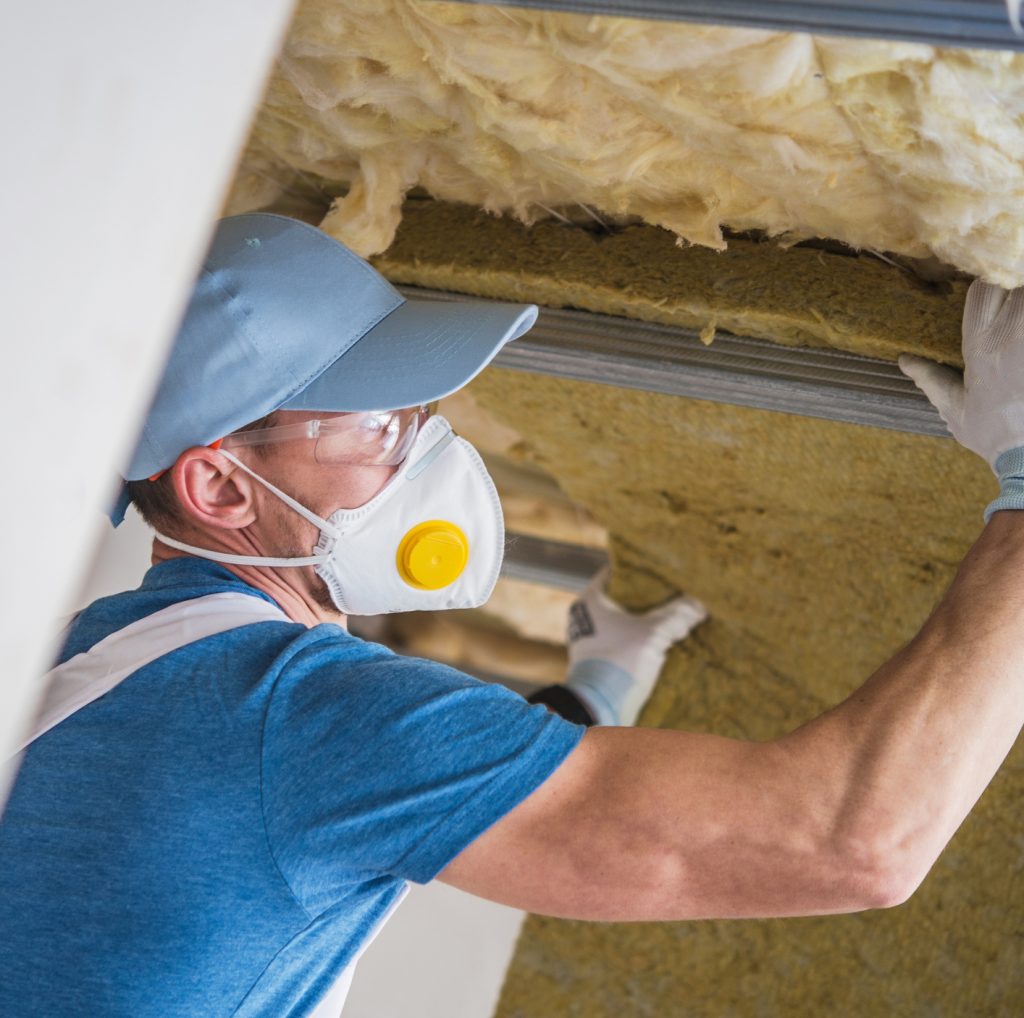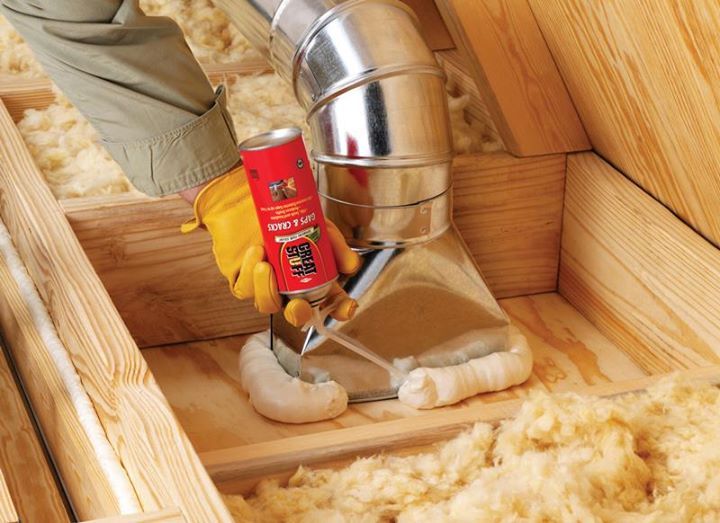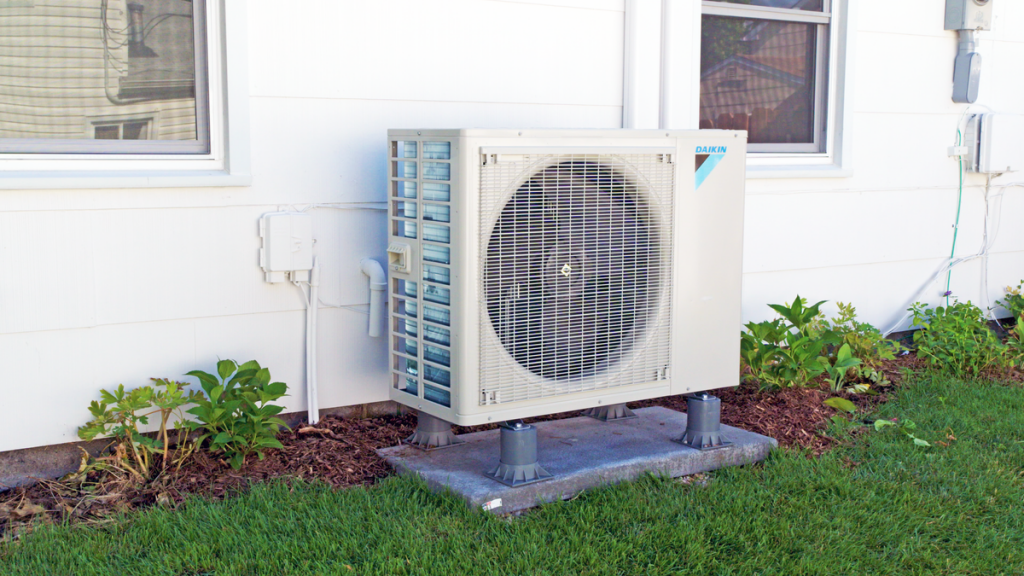The 25C tax credit is one of the best home upgrade incentives in years for homeowners. Find out if your home is eligible.
If you’ve been shopping around for home upgrades—or have paid any attention to the news lately—you’ve probably heard something about tax credits. And there’s a good reason for that: the 25C tax credit is a big deal.
Why? Well, it’s one of the best home upgrade incentives in years for homeowners, and it provides those who want to upgrade their weatherization and HVAC with a significant financial boost.
(Want to upgrade your HVAC or insulation? Sealed will connect you to the right contractor for your home, and we’ll make sure eligible rebates are included. Get started here.)
The only downside? All of these tax credits and paperwork can get very confusing.
The good news here is that our expert team knows a lot about home energy, and we’re used to doing all the paperwork that comes along with getting rebates and credits for your home upgrades.
So we’re in the perfect position to demystify the 25C tax credit. Which—you guessed it!—is what’s about to happen here.
We’re energy-efficiency experts, so this guide will give you what you need to know to cover the essentials. Bring financial questions to your tax professional!
In this guide, you’ll learn:
- What the 25C tax credit is
- Which upgrades are eligible for the 25C tax credits
- How the 25C tax credit works (and how to get it!)
- Best ways to use the 25C tax credit for home energy upgrades
- How to get home energy upgrades—plus eligible tax credits and rebates
What is the 25C tax credit (aka the home energy tax credit)?
Basically, the 25C tax credit is a way for the government to encourage energy efficiency by reducing the amount of taxes you owe if you install qualifying upgrades in your home.
How big will your energy-efficient tax credits be? Well, that depends. It could be as much as $3,200 in a single year, but the actual amount depends on what kind of upgrades you’re installing.
Confused? Don’t be.
Let’s break down the key facts about the energy tax credit:
- Starting in 2023, the 25C energy efficiency tax credit will give you up to 30% back on of the purchase and installation cost of qualified home upgrades (as well as a few other related energy efficiency tasks, such as energy audits).
That means if you fund a qualifying home weatherization project that costs $3,000, you could get a credit of $900 to apply to the taxes you owe that year. Not bad.
- The credit isn’t unlimited—it’s capped annually at $2,000 for heat pumps and heat pump water heaters and $1,200 for other upgrades (1). And if you install a heat pump and other energy efficiency upgrades? You could get up to $3,200 back (2).
- The credit is not refundable—which just means it’s only for reducing the amount of taxes you owe. You won’t get the money back as a tax refund. That said…
- The credit resets every year, which means you can use the credit again and again! This is excellent news. If you use the 25C tax credit to purchase air sealing this year, you can use it again in five years when you install a heat pump.
- The credit is available until 2032. After that, the amount of the credit is expected to go down (3). If you’re thinking about making some energy-efficient upgrades, this is the decade to do it. (Given the rising cost of energy these days, the sooner the better.)
- Is there an energy tax credit for 2022? Yes. But the credit is for a much smaller amount—it’s a lifetime credit with a max of $500.
- If you work with Sealed, we can help you navigate all the paperwork and make the most of your 25C tax credit—and any other local rebates you may be eligible for.
Essentially? If you make energy upgrades to your home, you can get some money back on your taxes. Pretty good deal.
So, what exactly can you get a 25C credit for, anyway?
Which upgrades are eligible for the 2023 energy tax credits?
First, before we talk about which upgrades are eligible, let’s talk about whether you and your house are eligible.
To qualify for the 25C tax credit, you must meet certain criteria:
- Be a taxpayer living in a home or apartment
- Purchase and/or install the upgrades (renters, you may be able to qualify for upgrades like a window-unit heat pump!)
- The house must already exist (it can’t be a new build)
- If you’re a landlord, you’re unable to use it for properties you don’t live in—which means you can’t use the credit to upgrade rental properties or Airbnb houses. However, tax credits for certain improvements are eligible for second homes
- The weatherization upgrades must meet certain efficiency guidelines (often denoted by the ENERGY STAR seal of approval)
All of this is pretty straightforward, right?
Essentially, you have to own the house and be living in it to be eligible. And you have to prove that your upgrades actually make your house more efficient.
But there’s one other thing to call out here: In order to qualify for the credit, you need to owe some taxes in the foreseeable future.
Because this credit is nonrefundable, it only works by reducing the amount of taxes you owe. If you don’t expect to owe any taxes, you won’t be able to take advantage of this tax credit.
Okay, now let’s talk about which upgrades are eligible, and you’re in luck because… it’s a long list. (Tap here if you just want to see our expert recommendations.)
The key home upgrades that qualify for the 25C tax credit:
- Insulation and air sealing (also called weatherization)
- Energy-efficient windows and doors
- Heating, cooling, and water heating systems
- Energy audits
1. Insulation and air sealing (aka weatherization):
Weatherization upgrades keep your house from exchanging too much air with the outside. You may be able to claim your 25C credit for materials like:
- Insulation batts
- Rolls of insulation
- Blow-in insulation fibers
- Rigid boards of insulation
- Expanding spray foam insulation
- Foam-in-place insulation
- Weatherization supplies such as specialized caulk, tape, spray foam, and sealants

Just remember that your weatherization supplies and insulation choices need to meet the Department of Energy’s recommended R-values for your climate zone to qualify for the credit. (Learn more about R-values and insulation in the complete guide to attic insulation.)
2. Energy-efficient windows and doors:
You can also apply your 25C tax credit to replace your exterior doors and windows with ones that are ENERGY STAR certified.
Note that some special limits apply here: You can spend up to $600 of your credit on windows and up to $500 on doors (although no more than $250 on any one door) (4).
Important note here: Energy-efficient windows and doors may not produce as much return on your investment as you may think. For a deep dive, check out our FREE Five home comfort and efficiency myths busted ebook.
3. Heating, cooling, and water heating systems:
One of the best ways to apply your 25C credit is to purchase a more energy-efficient HVAC appliance or water heater. We recommend nabbing a heat pump, if you don’t already have one, but here’s a bigger list of what may be eligible:
- Air source heat pumps
- Central air conditioning
- Water heaters
- Advanced main air-circulating fans
- Gas, propane, or oil furnaces and fans (We recommend skipping these if you’re able! Check out heat pumps vs. furnaces to see why.)
- Gas, propane, or oil hot water boilers (Same here! Skip this if possible. Learn why in heat pumps vs. boilers.)
Note here that you can’t choose just any HVAC appliance—you need to choose one that meets the highest efficiency standards available at the time you plan to claim the credit. For most of these HVAC systems, that simply means finding the ENERGY STAR certification on the label.
And heat pumps are the most efficient of them all.
In one week [Sealed contractors] insulated my entire home, rerouted my sump pump, and installed a hybrid heat pump hot water tank. My home is now draft free, my hot water is consistent in temperature…, and I couldn’t be happier.
Laurie S., Sealed customer
4. Energy audits
Honestly, unless you have a brand-new house (or are living in homemade yurt), you should probably get an energy audit by a pro. Audits are indispensable for finding where your house is wasting the most energy.
You can apply up to $150 of your 25C credit toward getting an independent audit. It’s a great investment. (Find out which energy audits are available near you.)
How does the 25C tax credit work?
Because it’s a tax credit, the government won’t just mail you a check (we wish!)—instead, you’ll deduct the amount of the credit from the taxes you owe.
Here’s an overview of how this works.
How to apply for the 25C tax credit
We won’t lie to you—getting the 25C properly credited to your taxes can be a bit of a process, and you’re going to want to call in your accountant or a tax pro. (We’re home energy experts, after all, not financial pros.)
But the basics are pretty simple:
- Step 1: Install qualifying upgrades to your home. (Double and triple-check to be sure everything qualifies!)
- Step 2: Keep all receipts and documentation for the upgrades you make to your home. Write exactly what was installed, who installed it, and how much it cost. Make copies of everything. Put it all in one place! Trust us, it’ll make the process so much smoother when it comes time to file.
- Step 3: Call in your accountant and let them know you plan to use the 25C tax credit on your taxes. We recommend making this call early!
At that point, your accountant will likely…
- Ask for information about the upgrades made to your home, including the type of improvement, the date it was placed in service, and the cost.
- File IRS Form 5695 with your tax return.
- Deduct the amount of the credit from the taxes you owe.
A quick disclaimer, too: Only your accountant, and ultimately the US government, can determine if you’re eligible to have this credit deducted.
That’s why if you’re counting on the credit to reduce your tax burden, it’s crucial to call in a financial pro earlier rather than later—you don’t want any nasty surprises next tax season.
(Learn more about getting the most out of the Inflation Reduction Act home energy upgrade incentives.)
A full-system approach to stopping home energy waste has a proven track record: We’ve shown that holistic work can reduce a home’s energy use by up to 50%. Learn how.
What’s the best way to “spend” your 25C tax credit?
So glad you asked! We’re energy nerds that live for these questions, so… buckle up. We’ve got two answers for you.
The first answer? We recommend spending your credit in two ways:
Ensure your home’s thermal barrier is up to snuff
Essentially, this means investing in air sealing and insulation to make sure your home is airtight—good air stays in, bad air stays out. (Thermal barrier is just a term for the way your home keeps outside air out.)

You can read about how important improving this barrier is at length elsewhere (start here: The Complete Guide to Air Sealing), but for now we’ll just state two facts:
- Air leaks and lack of insulation are responsible for up to 45% of energy waste in your home. Really (5).
- If your house is exchanging too much air with the outside, a fancy HVAC and new doors or windows won’t make much difference. It’ll be like pouring more water into a bucket with a hole.
Tap here to read about How insulation works to save energy.
Once you’ve made sure your house is ready to keep all the good air inside…
Get better HVAC
Now that you’re sure that your house isn’t letting too much conditioned air escape, then it’s time for the real life upgrade:
A new, energy-efficient heat pump.
You can read all about heat pumps here, but, in brief, this is why they’ve become the new standard in HVAC:
- They use way less energy than traditional HVAC systems—up to 3x less (6)
- They can replace both heating and air conditioning systems…
- They dehumidify and filter your home’s air while they’re at it
- They don’t smell (and they don’t require new ductwork if you’ve got an older, classic house you don’t feel like mangling)
- They offer zone-by-zone comfort with ductless options
The biggest con to a heat pump is the initial cost, but, hey, that’s where the 25C tax credit comes in.

(If you go with Sealed for your home upgrades, we can help you navigate all the federal energy upgrade incentives and local utility rebates you may be eligible for.)
Okay, that was the first answer. And it’s a good one! Those are the best two strategies we know, and they’ve proven themselves in the thousands of homes we’ve upgraded.
(Related read: The 8 best home energy upgrades—and their ROI)
But we also have a second answer—and more important—answer for you which is this:
We don’t know what’s best for your house. Yet.
No article on the internet can tell you what energy efficiency upgrade strategy is right for your house. Every home is different, and the best way to spend your 25C tax credit will depend on your home’s specific needs.
Your house may need air sealing badly, but the HVAC situation might be fine. You might need a heat pump, or it might be that your house will stay perfectly cool with your existing HVAC—after you get new attic insulation.
Lots of upgrade combinations are possible.
That’s why it’s so darn important to get an expert to help you figure out the perfect upgrade plan for your home.
The good news: It’s really easy to call in an expert now. Here’s how.
Claim your credits and your comfort
Making energy-efficient upgrades to your home can be a task that’s… daunting.
At Sealed, we’re energy experts. When you partner with us, we’ll call in the pros to see what your house needs. And then… well, we make it happen.
Sealed will make sure you have everything you need to qualify for any energy upgrade incentives you may be eligible for—including the 25C credit, yes, but also any other rebates… which you may not even know are available!
Complete our quick questionnaire here to see if your house qualifies for home energy upgrades.